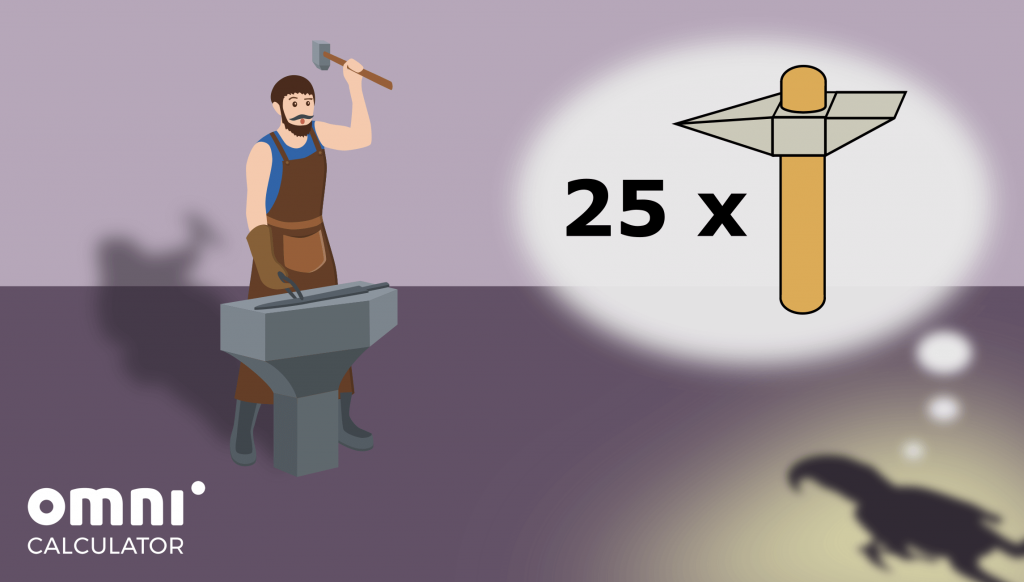Concepts addressed: square pyramid volume, triangular prism volume, percentages.
Recommended grade: 7th.
Difficulty level: Basic.
An advanced version of An order of mine is also available.
Scenario:

You own a smithy in a small rural town some few miles away from some high mountains. Today seemed like just another lazy day, but suddenly a very short, bearded man enters your shop and greets you with a thick accent you don’t recognize. He sure is an odd client, but he soon attracts your attention with the big order he wants you to make.

- The client would like you to prepare for him twenty-five pickaxes. The head of each pickaxe has on one side a right square pyramid, which is 9-inches high, with a 3-inch base edge, and on the other side a triangular prism, which has a height of 3 inches and whose base is a right triangle with legs that are 3- and 6-inches long. What volume of metal do you need to fulfil the order if each pickaxe needs additional three cubic inches of metal for the joint between the two parts?
- The visitor offers you $9,000 for the whole order. You buy the metal for $5 per cubic inch, and every pickaxe needs a $5 wooden handle. How much are you going to earn on this deal if you have to subtract 15% from the shop’s profit to pay the local girl that helps you?
Useful calculators:
- Right rectangular pyramid calculator – https://www.omnicalculator.com/math/right-rectangular-pyramid
- Triangular prism calculator – https://www.omnicalculator.com/math/triangular-prism
- Percentage calculator – https://www.omnicalculator.com/math/percentage
Question 1 hints:
Question 2 hints:
Solutions:
Step-by-step solution:
V_pyramid = (a² * h_pyramid) / 3 = ((3 in)² * 9 in) / 3 = 27 in³.

On the other hand, the prism has a right triangular base, with legs b = 3 in and c = 6 in. Observe that we can easily calculate the area of this triangle since b can be its height, and c its width (or vice versa). Moreover, the prism has a height, h_prism, of 3 in. Now we use the triangular prism calculator to get
V_prism = h_prism * (b * c) / 2 = 3 in * (3 in * 6 in) / 2 = 27 in³.
We are now ready to calculate how much metal is needed for a single pickaxe. Remember that each requires an additional 3 in³ for the joint. This means that:
V_pickaxe = V_pyramid + V_prism + 3 in³ = 27in³ + 27 in³ + 3 in³ = 57 in³.
Lastly, we multiply the volume needed for one pickaxe by the number the client ordered:
V = 25 * V_pickaxe = 25 * 57 in³ = 1,425 in³.
metal_cost = V * $5 = 1,425 * $5 = $7,125.
Recall that each of the 25 pickaxes needs a $5 handle. Therefore,
total_cost = metal_cost + 25 * $5 = $7,125 + $125 = $7,250.
This means that the shop has made $9,000 – $7,250 = $1,750 on this order. Maybe it’s time to reconsider our area of work?
Anyway, the last thing to do is to take away 15% from this sum for the helper. This means that you’ll be left with 100% – 15% = 85% of the profit. The percentage calculator shows that:
earnings = 85% * $1,750 = $1,487,50.